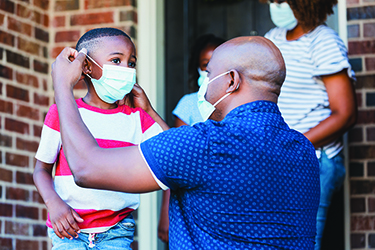Health disparities in the U.S. by race and ethnicity have widened during the COVID-19 pandemic, particularly for drug-related and premature deaths, a report released Dec. 6 finds.
Drug-related deaths increased 30% in 2020, the first year of the pandemic, compared to the previous year, according to the “America’s Health Rankings 2022 Annual Report,” created by the United Health Foundation in partnership with APHA.
The deaths did not occur equally across population groups, however. For example, the American Indian and Alaska Native population had a rate of drug deaths nine times higher than that of the Asian population. Drug-related deaths among multiracial and Black people rose over 40% in 2020. And there was a 29% increase in the use of non-medical drugs, including illicit drugs, between 2021 and 2022.
The increases are a cause for alarm, according to Rhonda Randall, DO, executive vice president and chief medical officer of UnitedHealthcare Employer and Individual.
“We need to find ways to get those with substance abuse disorders the help they need,” Randall said in a news release.
Overall, premature deaths for Americans rose 18% from 2019 to 2020, the sharpest increase in deaths chronicled by America’s Health Rankings in its 33-year history.
The special edition of America’s Health Rankings provides a portrait of the pandemic’s impact on people in the U.S. in 2020 and 2021. Data from 2022 was also included, offering more insights into how Americans are coping with the pandemic.
Long COVID, which occurs when disease symptoms linger long after the initial infection has ended, has impacted nearly 30% of Americans who have had COVID-19, the report said, citing data from the U.S. Census Bureau. Health disparities are prevalent, with long COVID-19 symptoms occurring in Hispanic people at nearly twice the rate of Asian people, who experienced the lowest rates.
APHA Executive Editor Georges Benjamin, MD, said the data show that the nation still has a “health debt to pay” regarding communities of color.
“We paid this debt during the pandemic, and we will continue to pay it over the coming years unless we work to address the underlying racial and ethnic and other inequities that COVID-19 highlighted and exacerbated,” Benjamin said in the report.
The rankings highlighted other troubling areas in U.S. health. More Americans have multiple chronic conditions, obesity and high cholesterol. In addition, the percentage of people experiencing frequent mental distress increased from 13.2% in 2020 to 14.7% in 2021.
Over that same period, firearm deaths jumped from 12.1 to 13.7 deaths per 100,000 people nationwide.
Some positive trends emerged from the report. Food insecurity dropped nationwide from 11.7% between 2016 and 2018 to 10.4% between 2019 and 2021. Also, more people had health insurance and more households have high-speed internet, with access increasing for racial and ethnic groups.
Mental health providers also increased their presence, though not enough to offset spiking demand from the stresses of the pandemic.
New Hampshire named healthiest state
The report also includes state health rankings, derived from 51 measures across five categories of health: social and economic factors, physical environment, behaviors, clinical care, and health outcomes.
New Hampshire was named the healthiest state in the 2022 report. The state ranked No. 1 in social and economic factors, and in positive health behaviors. Residents had relatively low levels of multiple chronic conditions, were not socially isolated, were physically active and had high food security, the report said. Adult smoking decreased from 18% of the population to about 12% between 2016 and 2021. New Hampshire also ranked high for its health care system.
After New Hampshire, the top healthy states were Massachusetts, Vermont, Connecticut and Hawaii. The states at the bottom of the rankings were Alabama, West Virginia, Arkansas, Mississippi and, at 50, Louisiana.
West Virginia was typical of states at the end of the list, scoring low in physical activity and high for multiple chronic health conditions and non-medical drug use. Drug-related deaths in West Virginia increased 54% between 2019 and 2020, from 50.4 deaths per 100,000 people to 77.4 deaths.
America’s Health Rankings uses multiple national data sources to produce key health-related measures across categories of health determinants and outcomes for each state.
Mary Stortstrom contributed to this article.
Photo by SDI Productions, courtesy iStockphoto.